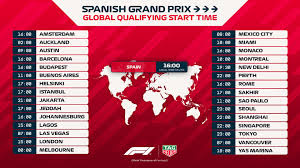
Introduction to F1 Qualifying
Formula 1 qualifying is an essential aspect of the sport that plays a critical role in determining the starting grid for the main race. Conducted the day before the race, qualifying sessions gauge the speed and performance of drivers and teams, making it a pivotal moment for strategy and potential success on race day. A solid qualifying performance can give a significant tactical advantage, influencing how the race unfolds.
Structure of F1 Qualifying
The qualifying format consists of three distinct sessions, known as Q1, Q2, and Q3. In Q1, all participating cars run to set their quickest lap times, with the slowest five drivers eliminated at the end of this session. This process continues through Q2, where the remaining drivers strive for the fastest times while the bottom five are again eliminated. The final session, Q3, features the top ten drivers competing for pole position—the coveted first spot on the grid for the race.
Recent Developments in F1 Qualifying
As Formula 1 continues to evolve, so does its qualifying format. Innovations such as the introduction of new tire types and adjustments to qualifying rules have stirred discussions within the racing community. As of 2023, recent races have shown an increasing trend toward track evolution, where conditions can change dramatically, affecting lap times considerably. The chaos of qualifiers, exemplified at the 2023 Canadian Grand Prix where unexpected weather changes caused strategic reshuffles, highlights the unpredictable nature of the sport.
Impact of Qualifying on Race Dynamics
Qualifying results significantly impact a racer’s strategy. For instance, leading teams like Mercedes and Red Bull often aim for pole position to control the pace from the front. Conversely, those starting further back may have to navigate through traffic, making overtaking crucial and difficult. Hence, the qualifying sessions can heavily dictate race outcomes, and drivers’ grid positions can lead to tactical plays from the onset.
Conclusion and Forward Look
The significance of F1 qualifying is palpable, dictating not only the starting positions of drivers but also steering the overall narrative of the race. As anticipation builds for upcoming Grand Prix events, teams are likely to continue focusing on optimizing their qualifying strategies. With an eye on future developments, fans and experts alike can expect ongoing changes as the sport evolves to heighten competitiveness and excitement. For viewers, the drama of qualifying is a crucial prelude, setting the stage for the race day battles to come.



